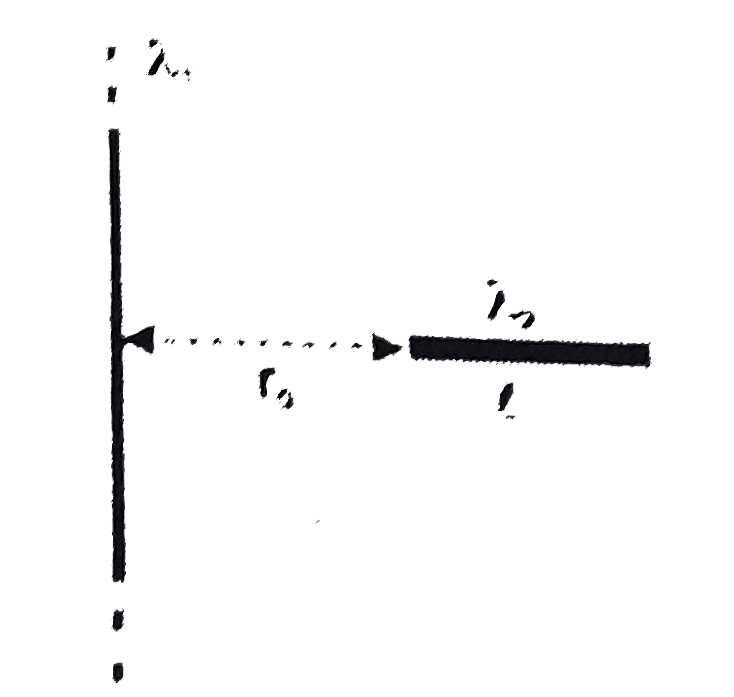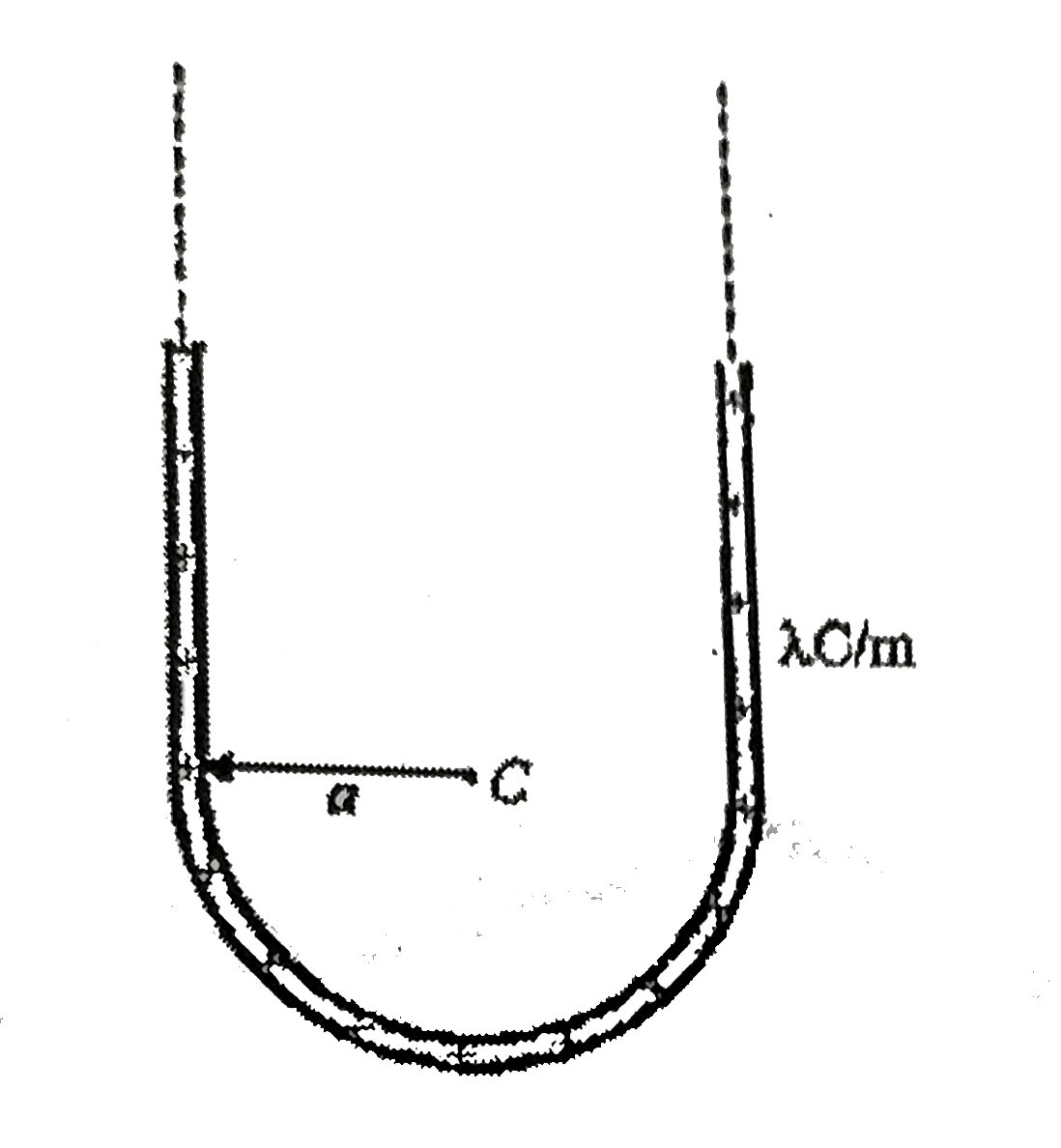An infinitely long string uniformly charged with a linear charge density λ1 and a segment of length l uniformly charge with linear charge density λ2 lie in a plane at right angles to each other and separated by a distance r0 as shown in figure. The force with which these two interact is λ1λ24πε0ln(x). If l=r0, then find the value of x.

The correct Answer is:4
Step by step video, text & image solution for An infinitely long string uniformly charged with a linear charge density lambda_(1) and a segment of length l uniformly charge with linear charge density lambda_(2) lie in a plane at right angles to each other and separated by a distance r_(0) as shown in figure. The force with which these two interact is (lambda_(1) lambda_(2))/(4 pi epsi_(0)) ln (x). If l=r_(0), then find the value of x. by Physics experts to help you in doubts & scoring excellent marks in Class 12 exams.
Updated on:21/07/2023Topper's Solved these Questions
- ELECTROSTATICSBook:RESONANCEChapter:ELECTROSTATICSExercise:Part - IV
Explore 9 Videos
- ELECTROSTATICSBook:RESONANCEChapter:ELECTROSTATICSExercise:Exercise - 3 Part - I
Explore 34 Videos
- ELECTROSTATICSBook:RESONANCEChapter:ELECTROSTATICSExercise:Exercise - 2 Part - I
Explore 21 Videos
- ELECTROMAGNETIC INDUCTIONBook:RESONANCEChapter:ELECTROMAGNETIC INDUCTIONExercise:A.l.P
Explore 19 Videos
- EXPERIMENTAL PHYSICSBook:RESONANCEChapter:EXPERIMENTAL PHYSICSExercise:PART -II
Explore 10 Videos
Similar Questions
An infinitely long string uniformly charged with a linear charge density λ1=1μC/m and a segment of length I uniformly charged with linear charge density λ2=1ln4μ C/M lie in a plane at right angle to each other and separated by a distance lassbown∈thefigure.Determinetheforce (in mN ) with which these two intertct.
'(##CEN_KSR_PHY_JEE_C18_E01_035_Q20##)'
View SolutionA segment of a charged wire of length l, charge density λ2 and an infinitely long chaged wire. Charge density λ1. Lie in a plate at right angles to each other. The sepatation between the wires is r0. Determine the force of interction between the wires.
View Solution
Knowledge Check
A very long uniformly charged cylinder (radius R) has a surface charge density σ . A very long uniformly charged line charge( linear charge density λ) is placed along the cylinder axis. If electric field intensity vector outside the cylinder is zero then :
Aλ=RσBλ=−RσCλ=2πRσDλ=−2πRσFor an infinite line of charge having linear charge density λ lying along x-axis the work done in moving a charge q form C to A along CA is
 Aqλ2πε0In2Bqλ2πε0In√2Cqλ4πε0In2Dqλ2πε0In(0.5)
Aqλ2πε0In2Bqλ2πε0In√2Cqλ4πε0In2Dqλ2πε0In(0.5)Electric field at a point of distance r from a uniformly charged wire of infinite length having linear charge density λ is directly proportional to
Ar−1BrCr2Dr−2
An infinitely long time charge has linear charge density λC/m the line charge is along the line x=0,z=2m find the electric field at point (1,1,1) m.
View SolutionIn the given arrangement find the electric field at C in the figure. Here the U-shaped wire is uniformly charged with linear charge density λ. [0]

View SolutionA semi-infinite insulating rod has linear charge density λ. The electric field atthe pointPshown in figure-1.418 is:

View SolutionFind the electrostatic energy stored in a cylindrical shell of length I, inner radius a and outer radius b, coaxial with a uniformly charged wire with linear charge density λC/m.
View SolutionA semicircular wire is uniformly charged with linear charge density dependent on the angle θ from y-direction as λ=λ0|sinθ|, where λ0 is a constant. The electric field intensity at the centre of the arc is

View Solution

